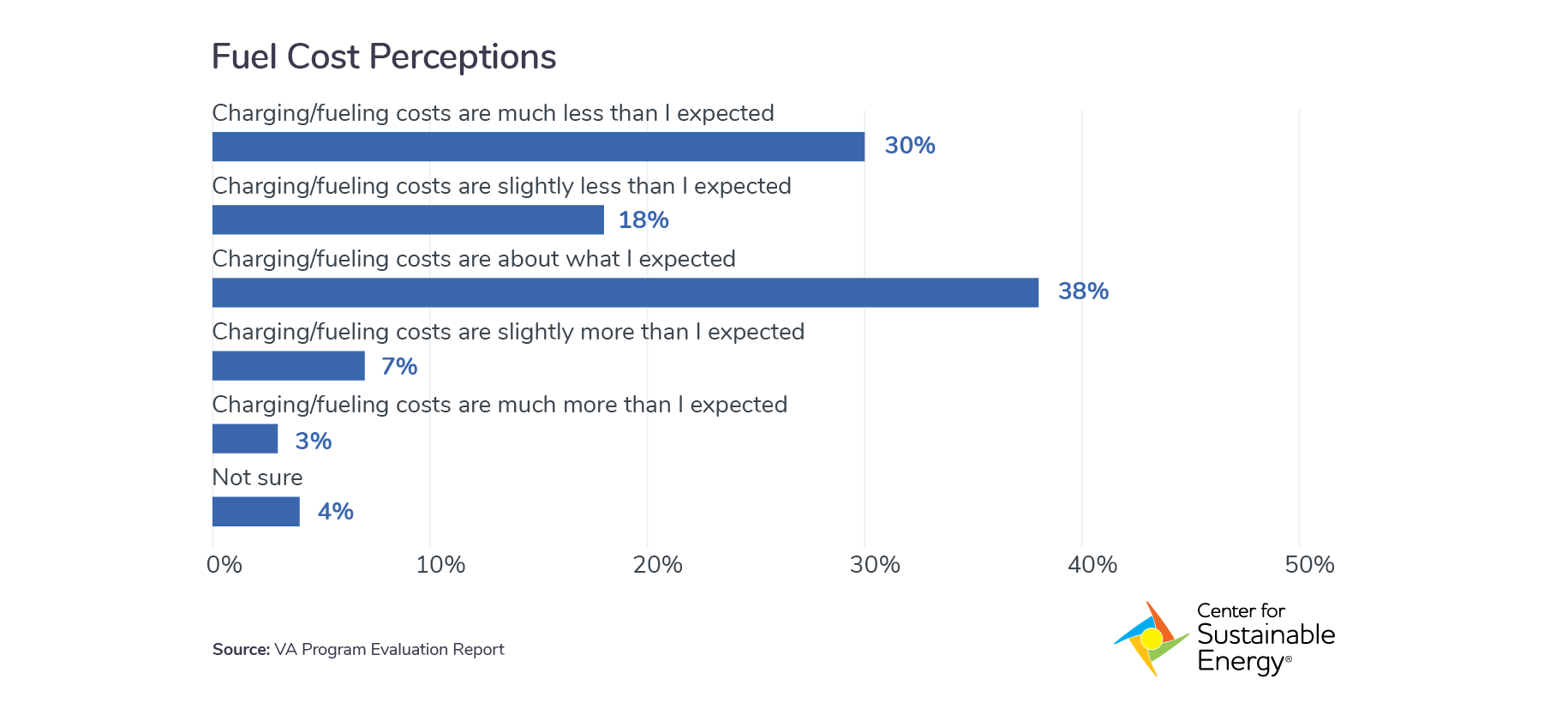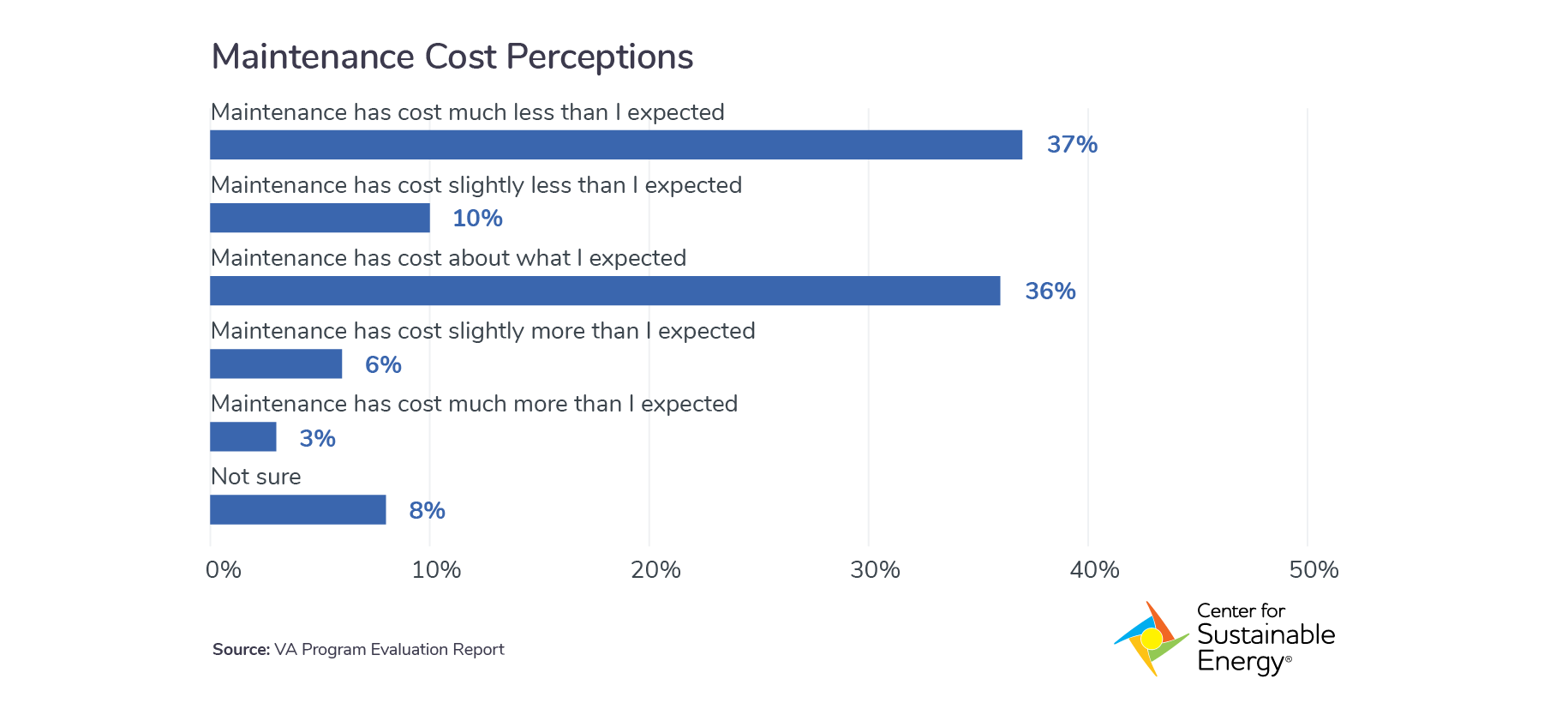EV Owners Didn’t Expect to Save So Much on Operations and Maintenance

How often are you surprised by how much LESS you are paying for something?
Nearly half of electric vehicle (EV) drivers surveyed by the Center for Sustainable Energy (CSE) as part of a California program to help low- and moderate-income households afford EVs said the costs to charge and maintain an EV were less than they expected.
If we want to sell more EVs, especially to people in disadvantaged and low-income communities, we need to make sure consumers understand this key fact: It costs less to charge and maintain an EV than to fuel and maintain a gasoline-powered car.
How much less? A study by Consumer Reports showed that operating an EV instead of a similar gasoline-powered vehicle can save about $9,000 in fuel costs and $4,600 on maintenance over the vehicle’s lifetime.
EV drivers got a pleasant surprise: more savings
This unfamiliarity with the cost-saving benefits of EV ownership was also found by a 2020 survey of consumers who had never owned an EV. Stanford University and Resources for the Future found that less than half of consumers believe EVs cost less to fuel than an internal combustion engine vehicle, and only 13% believe they cost less to maintain.
CSE reconnected with EV drivers who participated in the Clean Vehicle Assistance (CVA) Program about a year after they purchased their vehicle to learn about their EV ownership experiences. The California-wide CVA Program provides grants and low-interest financing for low- to moderate-income households to buy a used or new EV.
The lower fueling costs were a pleasant surprise for 48% of respondents. Similarly, 47% said they were paying less than they expected for maintenance. Only 10% said they were paying more than they expected to operate and maintain an EV.
This is good news for these drivers, especially given that low-income households spend about 14% of their earnings on gasoline. That’s up to three times more than the proportion of earnings higher-income households spend on gasoline. Those savings could be put toward rent, food, education, healthcare, childcare or other costs.
Figure 1. (CVA Program Evaluation Report)

Figure 2. (CVA Program Evaluation Report)

Talk more about the cost savings
Increasing EV adoption is one of our most effective tools to reduce greenhouse gas (GHG) emissions from the largest U.S. source: transportation.
Increasing awareness of these operations and maintenance cost savings – through tailored engagement with low-income households, community-based organizations, cost-conscious consumers in general, and auto dealership sales staff – could offset consumer concerns about the higher sticker price of many EVs, and increase the equitable adoption of EVs.

